Infrastructure to shape our future
We invest in the companies our societies are built on. These are companies solving for the world’s long-term challenges such as urban congestion, digital mobility, and the energy transition. We are unapologetically active investors. We invest for future generations in mind, because a more sustainable world means better outcomes for our investors.
Why invest in the First Sentier Global Listed Infrastructure strategy?
Listed infrastructure provides essential services to society, making it less sensitive to the economic cycle.
Growth is being driven by long-term structural themes such as the build-out of renewable energy, the need to ease urban congestion, and increasing reliance on mobile data.
Focus on environmental stewardship and social license to operate supports long-term, sustainable returns to shareholders.
Effecting change through ongoing engagement and dialogue with companies.
How we invest in global listed infrastructure
Discover opportunities in infrastructure
Infrastructure provides essential services for the way we live. It also offers investment opportunities as companies look to solve issues around digital connectivity, urban congestion and renewable energy.
Head of First Sentier Investors Global Listed Infrastructure Peter Meany discusses how infrastructure can offer investors steady dividend growth, inflation protection and long-term capital growth.
Addressing net zero and the energy transition
Whilst longer term targets such as net zero 2050 are important, our immediate priority is to set medium-term expectations and assess company performance against those measures.
We challenge management on where they expect to get to by 2025 and 2030. We need to be forward looking and also identify the laggards who could be the leaders.
The EV revolution to drive our energy future
Electric vehicles are coming. Demand for the electricity 'load', as well as charging infrastructure needed to support EV demand, will lead to significant changes to the way infrastructure is powered and distributed.
Watch First Sentier Investors’ Peter Meany explain the potential opportunity for investors, or download the paper: EV charging ahead
Global Listed Infrastructure strategies
Global Listed Infrastructure strategy
Listed infrastructure provides essential services to society, making it less sensitive to the economic cycle.
Growth is being driven by long-term structural themes such as the build-out of renewable energy, the need to ease urban congestion, and increasing reliance on mobile data.
Focus on environmental stewardship and social license to operate ensures long-term, sustainable returns to shareholders.
Effecting change through ongoing engagement and dialogue with companies.
Meet the investment team
Peter Meany
Andrew Greenup
Edmund Leung
Rebecca Sherlock
Read our latest insights
当サイトの表示設定について
国 :  Japan
Japan
Australia & NZ
-
 Australia
Australia -
 New Zealand
New Zealand
Asia
-
 Hong Kong (English)
Hong Kong (English) -
 Hong Kong (Chinese)
Hong Kong (Chinese) -
 Singapore
Singapore -
 Japan
Japan

















 United Kingdom
United Kingdom 